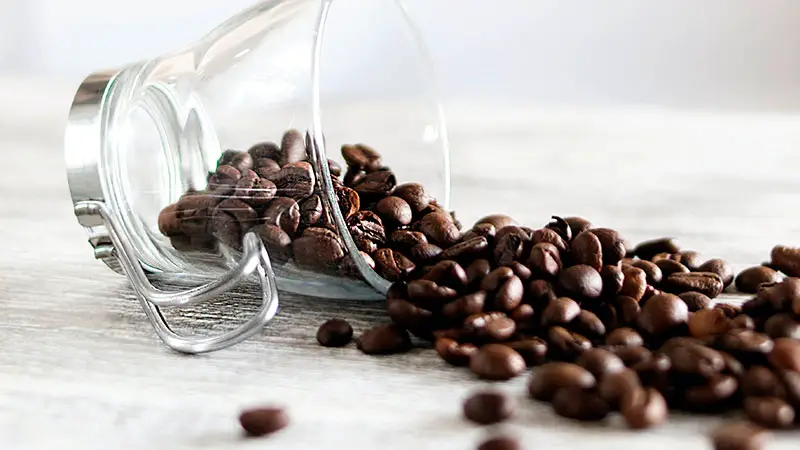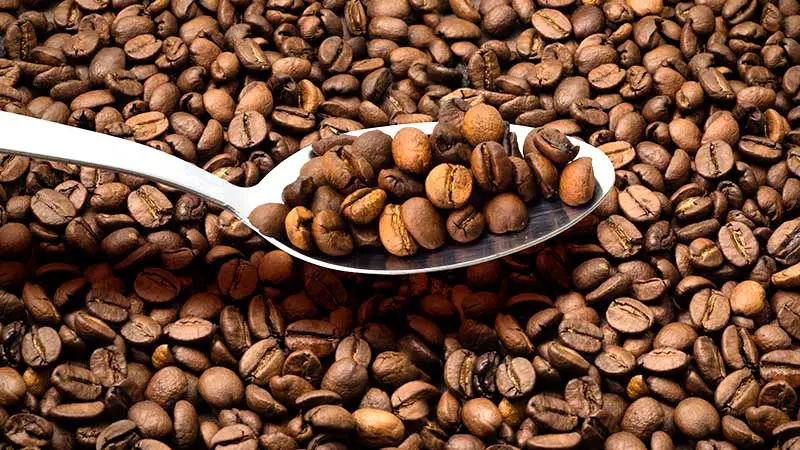As an Amazon Associate, I earn from qualifying purchases at no extra cost to you.
Ways to Determine if Coffee Beans Have Gone Bad
To determine if coffee beans are bad, assess their appearance, aroma, and taste. Inspect for mold, discoloration, or an off-putting smell. Fresh beans have a rich, aromatic scent. Rancid or sour odors indicate spoilage. Taste the brewed coffee—if it’s flat, bitter, or lacks the usual flavor profile, the beans may be past their prime. Trust your senses to ensure a delightful coffee experience. In this article, we will show you how to evaluate the quality of your coffee beans. Follow these steps to determine if your coffee beans are still good or if they have gone bad.
The Significance of Being Fresh
When kept properly, roasted coffee beans create a fragrant and flavorful brew with a wonderful mix of tastes. As beans are roasted, they slowly release gases and oils that are light and easy to move around. Soon after the coffee is roasted, the interaction is at its strongest, setting the stage for its unique flavor.
The fragrant oils wear off over time, and the beans go through important chemical changes. As food loses its freshness, its complex flavors fade away, leaving only a weak hint of what it used to taste like. The rich flavors and complexity of newly roasted coffee are missing from stale coffee, making it a less interesting and stimulating drink.
It’s also important to stress how important keeping conditions are. Exposure to air, light, and wetness speeds up the process of breaking down, which means that the quality goes down faster. Coffee experts need to know about every step of the process, from roasting to drinking. This means that freshness is important at all stages of a coffee bean’s life, not just the first grinding. When coffee is new, it really comes to life and gives you an experience that is out of the ordinary.

Indicators of Bad Quality Coffee Beans
To make the perfect cup of coffee, you need to pay close attention to the little things, have a good sense of smell, and be gentle. A big part of becoming a real coffee expert is learning how to tell the difference between good and bad coffee beans. In this part, we’ll talk about the smells, sights, and feels that can show that the quality of coffee beans is going down.
Coloration That Appears Faded Or Uneven
The color of freshly roasted coffee beans is vibrant and uniform, varying from deep brown to rich mahogany, depending on the roast level. One of the initial indicators of bad coffee beans is a noticeable loss of color. When beans lose their vibrancy, they may appear paler or unevenly roasted, which can affect the flavor development.
Oily Sheen Or Dull Appearance
If you notice an excessive and persistent oily sheen on the surface of your coffee beans, it may be cause for concern. Beans that are excessively oily, commonly found in dark roasts, suggest that they have been exposed to air for a long time, causing the compounds to break down and giving them a lackluster appearance. However, beans that do not contain any oil could indicate that they are not fully developed or have been stored for a long time.
Detecting Mold Or Visible Signs Of Contamination
Mold growth is a clear indication of spoilage. Check the beans for any fuzzy or discolored patches, as mold can affect both the taste and safety. Furthermore, it’s important to inspect the beans for any foreign matter, such as insects or debris, that could affect their quality.
The Coffee Aroma Is No Longer Present
The delightful fragrance of freshly ground coffee is a crucial element of the brewing process. When coffee beans spoil, their pleasant aroma fades, indicating a decrease in volatile aromatic compounds. When beans are past their prime, they may lose that delightful aroma that is so essential for a truly enjoyable coffee experience.
Development Of Unpleasant Odors
If you detect a foul or musty odor coming from your coffee beans, it’s a sign that they have gone bad. The unpleasant smell resulting from the degradation of oils in the beans can greatly affect the taste of the coffee, leading to a less than satisfactory experience. Rely on your sense of smell; if something feels strange, it probably is.
Texture That Is Prone To Brittleness Or Excessive Dryness
Roasted coffee beans have a natural moisture content that adds to their flexibility. When coffee beans become stale, they lose their moisture, which can make them brittle and overly dry. If the bean crumbles or lacks resilience when gently squeezed, it indicates deterioration.
Beans Clumping Or Sticking Together
Coffee beans retain their unique characteristics when stored correctly. If you observe beans sticking together, it might indicate that they have been exposed to moisture. This has an impact on the texture and can also lead to the possibility of mold growth, which further compromises the beans.

Performing a Brew Test
It is important to grasp the significance of low-quality beans on the brewing process. Using subpar beans can often result in an under-extracted cup, which may taste weak and lack flavor. On the other hand, beans that are roasted for too long or have gone bad can add a bitter and unpleasant taste, which can overpower the delicate flavors of the coffee.
Enjoying a cup of freshly brewed coffee is a delightful experience that harmonizes a perfect blend of flavors. If your coffee has an unpleasant taste, like being sour or musty, it’s probably because of low-quality beans. Performing a brew test can assist in refining your taste buds and identifying the delicate variations that distinguish an exceptional cup of coffee from an average one.
To conduct a thorough evaluation, try comparing the taste of fresh beans with those that may be of lower quality. The variation in scent, taste characteristics, and overall enjoyment will determine the quality of your coffee beans.
Storage Tips for Maintaining Freshness of Coffee Beans
Maintaining the quality of coffee beans is a continuous effort that starts right after they are roasted. Ensure your beans are stored in containers that are airtight, and keep them away from any sources of light, heat, or moisture. Using a container equipped with a one-way valve can help maintain freshness by allowing the release of carbon dioxide while preventing the entry of air, which can compromise freshness.
Choosing high-quality storage containers is just as crucial as picking out top-notch beans. Select containers that do not transfer odors and are resistant to light and moisture. Keep your coffee in a cool, dark spot like a pantry or cupboard to protect it from heat and light, which can degrade its quality.
Avoid common mistakes that can speed up the decline of coffee beans. It’s best to avoid storing them in the refrigerator, as the changing temperatures and condensation can affect their quality. Furthermore, it is advisable to avoid purchasing large quantities unless you are able to consume the beans within a reasonable period of time, as storing them for too long can result in a loss of freshness.
Common Misconceptions about Coffee Bean Freshness
Knowing the actual shelf life of coffee beans helps to clear up any misunderstandings. Coffee beans don’t mature like wine; instead, they have a specific period of optimal freshness. Understanding the roast date of your beans and the impact of freshness allows you to make well-informed decisions about your coffee selection.
Although it is important to have packaging that is airtight, not all packaging is the same in terms of quality. Coffee beans are sealed in a bag with a one-way valve to maintain freshness by allowing the release of carbon dioxide while preventing oxygen from entering. After opening the bag, it’s a good idea to transfer the beans to a sturdy, airtight container to keep them fresh for longer.
Salvaging Stale Beans: Can They Be Revived?
Don’t worry if your beans have lost their shine, there’s still a way to revive them. Try out different brewing methods like cold brew or French press to discover unique flavors in your coffee. In addition, mixing older beans with fresher ones can help balance the flavors and save the entire batch.
Discover the many ways to use stale coffee beans beyond the usual brewing methods. Repurpose ground stale beans to enhance the flavor of desserts, marinades, or even as an exfoliating scrub. This innovative method reduces waste and maximizes the potential of beans that may not stand out in a regular cup of coffee.
Final Words
It’s a whole new level of coffee enjoyment to be able to tell the difference between superior and inferior beans. For coffee lovers, this guide gives them the information they need to become smart shoppers who can enjoy the visual, aromatic, and physical aspects of coffee. Understanding the signs of low-quality coffee beans, learning the right way to store them, and busting common myths can help people get the most out of each bean’s flavor and aroma, ensuring a delicious cup every time. Let this guide be your wayfinding device as you search for the perfect brew. It will lead you to an extraordinary coffee experience.
